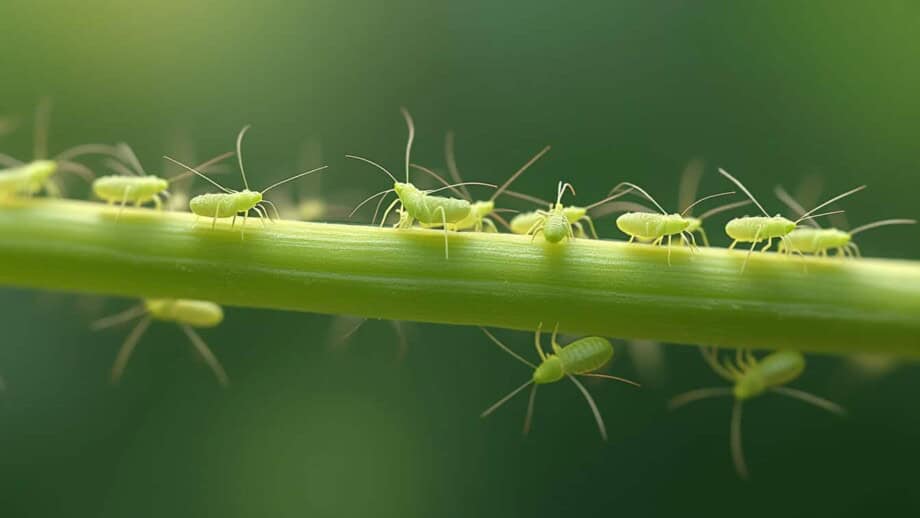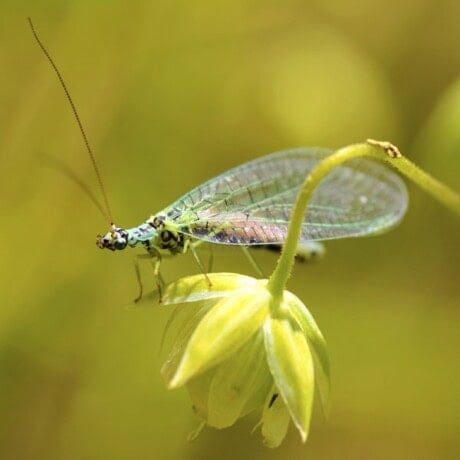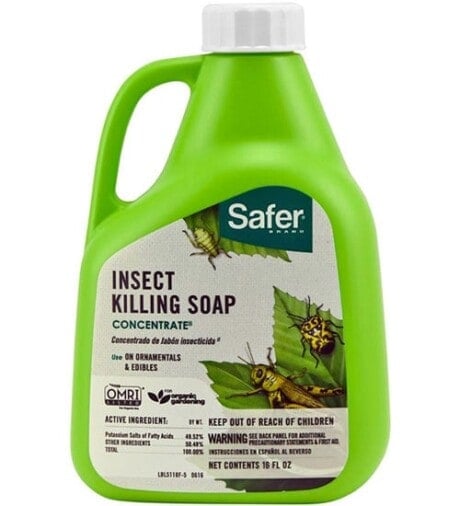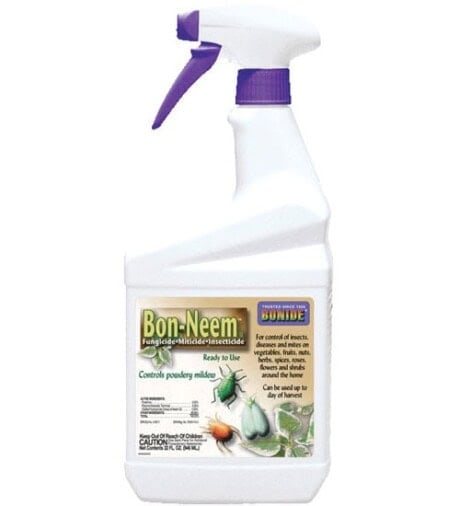Aphid Control: How to Get Rid of Aphids Effectively at Home

Aphids appear to get into every garden one way or the other. If you’ve had a home garden for a while, you’ve probably heard of these small pests. They are soft-bodied insects that feed by sucking the nutrient-rich liquids out of plants in order to sustain themselves.
There are about 4,000 different species of aphids around the world. Low to moderate populations rarely need to be controlled and typically do not harm plants.
They can seriously weaken plants in large enough numbers, damaging flowers and fruit. Severe infestations will also cause leaves to curl, wilt, or yellow and will impede plant growth.
It is crucial to control aphids before they begin reproducing, as they multiply rapidly. In one season, many generations can happen. But don’t let that worry you too much, aphids are relatively slow-moving pests that can be managed with consistent effort.
Early treatment, before they have an opportunity to breed, can significantly improve aphid control. Aphids regularly transmit plant viruses from one plant to another, causing the death of crops such as different kinds of citrus, potatoes, and even grains.
This guide to aphid control covers everything you’ll need in this consistent effort, without all the hassle! Read on to learn exactly how to get rid of aphids effectively from your home gardens.
What are Aphids?
Aphids are small, soft-bodied insects that feed by piercing and sucking fluids from plants. Their long, thin mouthparts allow them to feed through stems and leaves, as well as other tender plant parts.
They secrete a sticky liquid known as honeydew, which attracts ants. So a common way of checking for an aphid infestation is to an ant trail which can then help you identify the plants that may be infected.
Ants have also been observed protecting aphids from natural predators. Some from even been found herding them into tight colonies to facilitate honeydew harvesting.
Unfortunately, honeydew also provides an ideal habitat for the growth and spread of sooty mold. Cars and lawn furniture that are under-infested trees will also be covered with this sticky fluid.
In colder locations, aphids survive the winter as eggs and emerge in the spring; however, in warmer regions, they can be a problem for much of the year.
How to Identify Aphids
Aphids are small (1/8 inch long) and have soft pear-shaped bodies with long legs and antennae, and that may be green, yellow, brown, red, or black in color depending on species and food source.
Generally, adults are wingless, but some can grow wings, especially if populations are high. They have two whip-like antennae at the tip of the head and a pair of tube-like structures, called cornicles, projecting backward out of their hind end.

Life Cycle of Aphids
In spring wingless female aphids hatch from overwintering eggs and soon give birth to many female nymphs. They give birth to nymphs without mating, and they grow fast maturing to adulthood in about 10 days.
Once they grow, within a week they give birth to many more nymphs. This process is repeated several times and results in huge population explosions.
As the colony grows, a few of the females develop wings and fly off to other host plants to start new colonies.
In late summer and early fall sexual forms (males and females) develop which mate and lay overwintering eggs. There are many overlapping generations per year.
Note: Most aphids, except for the sexual forms, do not have to mate in order to reproduce, and they produce live young, rather than eggs.
What Kind of Damage Do Aphids Cause?
Aphids cluster together and quickly reproduce once they have colonized their selected host plant. Aphids pierce plant leaves and stems with their mouthparts, just like other sap-sucking insects do, to drain sap, nutrients, and moisture from the plant in the process.
Adults and nymphs consume plant juices. Depending on the species, they attack leaves, stems, buds, flowers, fruit, and even the roots of the plant.
Aphids are particularly attracted to fresh, new growth. Many aphid species, like the green peach aphid, are generalist feeders, while others, like the rosy apple aphid, are highly specific in the plants they feed on.
The younger the plant, the more vulnerable it is to long-term damage. As they feed on the plant, certain kinds of aphids inject a toxin into the plant, which causes additional difficulties to the plant’s growth, including further leaf curl and discoloration. Aside from sucking on the different parts of the plant, they also secrete a sticky, gooey fluid known as honeydew.
Sometimes the honeydew can promote the formation of sooty mold, a fungus that gives branches and leaves a black appearance. They unfortunately also spread viruses and diseases from one plant to another.
Aphids that feed on flowers or fruit can cause them to become warped or misshapen. On roots or leaves, certain aphid species induce galls to develop.
Signs of an Aphid Infestation
When looking for signs of aphid damage, look for leaves that are out of shape, stunted, turning yellow, or curling. It is important to check the undersides of leaves, as this is a common hiding spot for aphids.
The presence of a sticky material on the leaves or stems of the plant is a good indication that aphids may have been feeding on the sap of the plant, helping you to spot an infestation if you’ve been on the lookout.
The insects excrete a sweet liquid aptly called “honeydew,” which can be collected and used as food by other insects like ants. Aphids that feed on trees may drop this sticky substance onto roads, patio furniture, cars, and other surfaces so look around and see if you spot any of these signs.
If you do, make sure to check the plants and trees around it for aphids to identify the plants that have an infestation before immediately proceeding with aphid control measures.
Tip: Ants feed on the honeydew that sucking insects produce and will protect these pests from their natural enemies. An application of Tanglefoot Pest Barrier to the stalks of roses and other woody plants will help keep ants away.
How to Prevent Aphid Infestations
Although preventing aphids from entering your yard can be challenging, there are a few strategies that can be used to lessen their impact.
Protecting young plants with row covers can be helpful. Before planting, you can be proactive by searching for neighboring aphid populations and eliminating the problem.
Make sure not to overwater or even overfertilize, since aphids prefer plants with high nitrogen levels and soft new growth. Use fertilizers that release nutrients slowly.
Having varieties and plants that are resistant to aphids from the start will save you a lot of time and money, but that’s not always possible. The good news is that this guide will help you effectively get rid of any aphid infestations you may have.
How To Do Effective Aphid Control
Aphid control at home doesn’t need to be difficult. Here’s everything you should do for effective aphid control easily in your yard:
Prune Infested Leaves
First things first, start by pinching or pruning off heavily infested leaves or other plant parts. This will assist you in controlling the problem while you use other measures explained here.
Hose Off Plants
Next, use a product like the Bug Blaster to hose off plants with a strong stream of water and reduce pest numbers.
Use Beneficial Insects
Commercially available beneficial insects, such as ladybugs, lacewings and lacewing larvae, lady beetles, and parasitic wasps are important natural predators and can greatly help with aphid control.
For best results, make releases when pest levels are low to medium. If aphid populations are high, use a least-toxic, short-lived natural pesticide to establish control, then release predatory insects to maintain control.

Plant Natural Aphid Repellents
Another great way for effective, holistic aphid control is to plant natural aphid repellents such as garlic, catnip, chives, onion, leeks, marigold, dill, fennel, and cilantro.
These plants will naturally allow you to keep these pests away from keeping your yard aphid free!
Use Diatomaceous Earth
Consider applying 100% organic Diatomaceous Earth for long-lasting protection. Made up of tiny fossilized aquatic organisms, that look like broken glass under the microscope, DE kills by scoring an aphid’s outer layer as it crawls over the fine powder.
Try Insecticidal Soaps
Safer® Soap will work fast on heavy infestations. A short-lived natural pesticide, it works by damaging the outer layer of soft-bodied insect pests, causing dehydration and death within hours. Apply 2.5 oz/ gallon of water when insects are present, repeat every 7-10 days as needed.
Use Aphid Traps
Aphid traps are a great option to not only spot an infestation but to also effectively control it. These yellow traps resemble a healthy plant leaf and so attract aphids to the sticky trap and work really well. This effective insect glue can last for up to 3 months as well!
Use Horticultural Oils and Products
Another great way to control aphids is to use horticultural oils. Made for use indoors or out, Bon-Neem is a unique blend of potassium soaps derived from Indian Neem tree seed and other natural sources. It’s specially formulated as a ready-to-use spray that kills most insect pests on contact.
Horticultural oils should be applied early in the season or late in the fall to destroy overwintering eggs. Neem oil sprays are another great option that you can use.
Use Insecticides for Heavy Infestations
For heavy infestations, the use of insecticides sometimes becomes necessary.
BotaniGard ES is a highly effective biological insecticide containing Beauveria bassiana, an entomopathogenic fungus that attacks a long-list of troublesome crop pests – even resistant strains! Weekly applications can prevent insect population explosions and provide protection equal to or better than conventional chemical pesticides.
Fast-acting botanical insecticides should be used as a last resort. Derived from plants which have insecticidal properties, these natural pesticides have fewer harmful side effects than synthetic chemicals and break down more quickly in the environment.


















